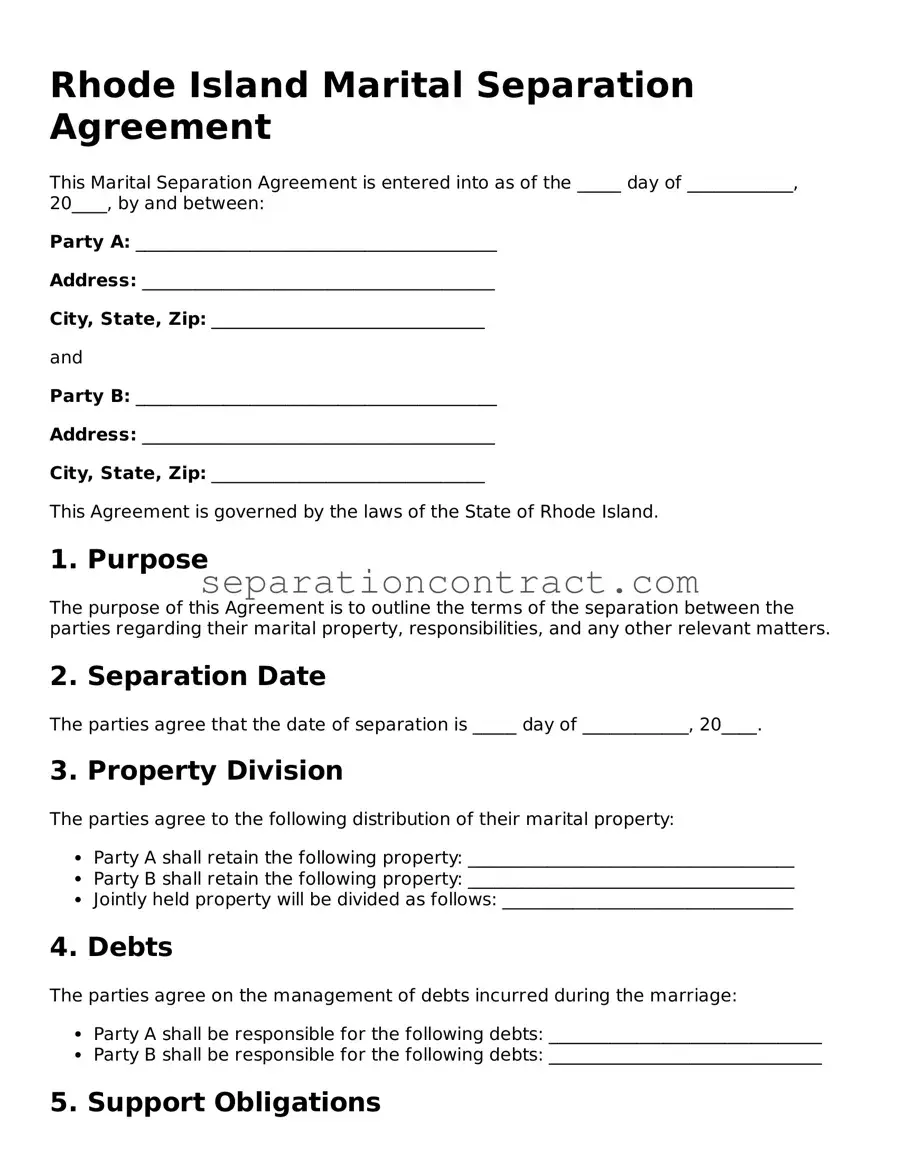Filling out the Rhode Island Marital Separation Agreement form can be a complex process. Many individuals make mistakes that can lead to confusion or delays in their separation. One common error is failing to provide complete and accurate personal information. This includes names, addresses, and other identifying details. Omitting or misspelling any of this information can result in significant issues down the line.
Another frequent mistake is not clearly outlining the terms of the separation. It's essential to specify arrangements regarding property division, child custody, and support obligations. Vague language can lead to misunderstandings and disputes in the future. Therefore, being as detailed as possible is crucial for both parties' peace of mind.
People often overlook the importance of signatures. All parties involved must sign the agreement for it to be legally binding. Not obtaining the necessary signatures can render the document invalid, which may cause complications in the separation process. Additionally, witnesses may also be required in some cases, and failing to include them can further complicate matters.
Another mistake is neglecting to review the form thoroughly before submission. This can lead to errors that might seem minor but can have significant implications. It is advisable to double-check for any inconsistencies or mistakes, as even a small error can delay the process or lead to legal challenges later on.
People sometimes forget to consider the impact of their separation on tax obligations. The Marital Separation Agreement can influence how individuals file their taxes, and not addressing these issues upfront can lead to unexpected financial consequences. Consulting with a tax professional may provide clarity on this important aspect.
Lastly, individuals often fail to seek legal advice. While it is possible to fill out the form independently, having a legal professional review the agreement can help ensure that all necessary elements are included and that the rights of both parties are protected. Seeking guidance can prevent costly mistakes and provide reassurance during what can be an emotionally challenging time.
